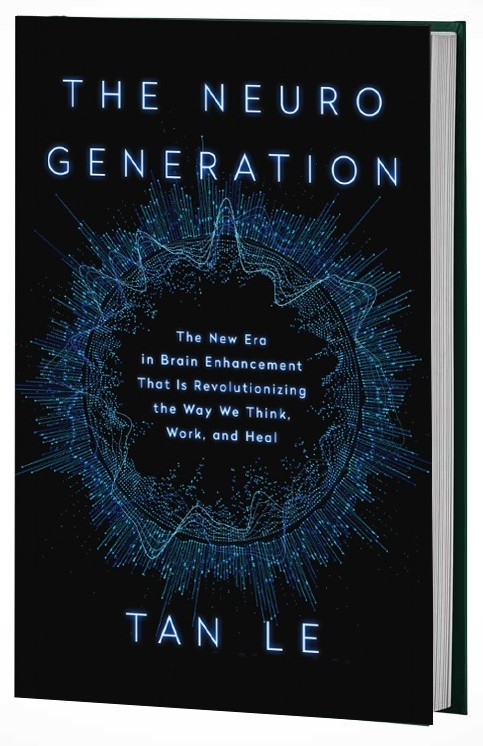What’s normal? When it comes to the brain, it’s hard to say, and that’s why we need to study global neurodiversity
 In a small village in India—a place so remote it has no electricity, no telecommunication system, and no cars or buses—a research worker prepares to place an EEG headset on a female villager’s head. The woman, who earns $3.75 a day laboring in a nearby rice paddy and who has never ventured outside her village, eyes the futuristic device with trepidation.
In a small village in India—a place so remote it has no electricity, no telecommunication system, and no cars or buses—a research worker prepares to place an EEG headset on a female villager’s head. The woman, who earns $3.75 a day laboring in a nearby rice paddy and who has never ventured outside her village, eyes the futuristic device with trepidation.
“Is it going to hurt my head?” she asks.
Sathish, the research worker, has heard this question before. In fact, he’s heard several similar queries from anxious villagers who have gotten scared when they saw the brainwear.
“Will it give me a headache?”
“Is it going to give me an electric shock?”
He assures the woman the headset is painless and explains that all she has to do is sit quietly and allow her mind to wander. Sathish gently adjusts an array of electrodes on the woman’s head and turns on the device that will read and record her brainwaves. Unsure what to expect, the villager does as Sathish asked. She closes her eyes, sits in silence, and starts to daydream.
This woman is just one of hundreds in close to fifty settlements in India who agreed to take part in a trailblazing research project. Launched by Tara Thiagarajan’s nonprofit organization Sapien Labs to study neurodiversity among people from all walks of life in every corner of the earth, this study included people in areas ranging from small remote villages to urban hubs with incomes ranging from less than $1 a day to over $400 a day.
What’s normal?
When it comes to the brain, it’s hard to say. Although the major physical architecture of the brain is something we all have in common, the way in which each individual brain is wired is determined by each person’s life experiences. The brain’s mysterious folds and trillions of connections become as unique as each and every one of the 7.5 billion individuals living on this planet.
For decades, however, neuroscience research has taken a shockingly narrow-minded approach. Over 75 percent of human neuroscience research has been conducted in the U.S. and Western Europe, mainly on university-educated students. Studying brains on a massive scale may help us, for example, understand why gender plays a role in the risk of developing certain brain-related diseases and psychiatric conditions. In boys, one of the hallmarks of ADHD is hyperactivity and an inability to sit still. In girls, however, this isn’t necessarily so. Girls are more likely to exhibit inattentiveness or to cry more frequently. When you consider that boys are diagnosed with ADHD at nearly three times the rate of girls, it begs the question—are some girls not being diagnosed because physicians and parents are missing the gender-based differences in symptoms?
Although there has been a concerted effort within the scientific community to include more women in clinical trials, the fact remains that researchers largely continue to gather data from only a tiny proportion of the types of brains that exist. There is a danger that by relying on research that largely studies the neurons, axons, dendrites, and synapses of just one narrow band of the population, tech innovators may inadvertently build bias and inequality into their development cycles, and ultimately, their brain enhancement products.
To mitigate this risk, we need to understand the whole gamut of neurodiversity. We need to study the brains of men, women, and children in Asia, Africa, and Latin America. We need to study the brains of people in tiny villages as well as urban environments. We need to explore the developing brain and the aging brain. We need to look at the female brain across the hormonal cycle. We need to study all of humanity.
Tara Thiagarajan, the founder and chief scientist of Sapien Labs, is on a mission to make it happen, and I’ve been helping supply EEG headsets and software for the project as she lays the groundwork to open one hundred neurolabs worldwide to study human brains on a broad scale. This radical concept of studying brainwaves in people from the world’s tiniest rural villages to urban settings is making waves of its own in the industry. At the inaugural Brainnovations Pitch Contest at the 2017 SharpBrains Virtual Summit—think of it as a sort of “Shark Tank” for neurotechnology innovators—Sapien Labs took home the prize as the Top Brainnovation Harnessing Big Data. This annual summit is teeming with the most cutting-edge thinkers, experts, innovators, and investors in the brain health and performance space. The 2017 event alone attracted more than 250 pioneers from twenty-three countries. In fact, it was through one of these summits where I was first introduced to Tara courtesy of SharpBrains CEO and editor-in-chief Álvaro Fernández, who also happens to be a fellow Young Global Leader and a member of the WEF Council on the Future of Human Enhancement.
Tara is equally comfortable at conferences in the world’s most sophisticated cities or on her own in the middle of nowhere in the farthest reaches of the globe. She’s one of those quant types, who tracks her calories, water intake, sleep, exercise, and even her mental consumption (what she’s reading, time spent on the internet, and so on) and how all these things affect her productivity, moods, focus, and metabolic system. Considering she has an undergraduate degree in math—along with an MBA from the Kellogg Graduate School of Management at Northwestern University and a PhD in neuroscience from Stanford—it’s no wonder she likes to measure things.
With headsets in hand, Tara’s team fanned out to a couple of villages in India and performed initial recordings from about fifty people. Then they headed to the city to record the brainwaves of college-educated, white-collar professionals. When she saw the results, Tara was thunderstruck. “Oh, my God,” she thought. “When we started looking at the brain activity, we saw that, fundamentally, the two did not look like the same thing at all. The distributions were barely overlapping and so distinctly different.”
For example, some features of the EEG varied up to 1000-fold across global populations, suggesting there is no “normal brain.” The team found such an exceptionally strong link between context and brain dynamics that Tara now firmly believes you can’t research the brain without taking the living environment into consideration. “The brain is an experience-dependent organ. Your heart will be the same way from the time you’re born. Your lungs will breathe the same way from the time you’re born. But your brain will not. It doesn’t function the same way when you’re born as it does when you’re an adult. It’s going to evolve based off the context you’re in and the stimulus in the environment. And you can see that, absolutely starkly,” she says of the study results. According to the stream of data pouring in, it became clear that the fundamental complexity of brain activity scales in relation to access to elements of modernization, education level, and a measure Tara calls the geofootprint—the degree to which a person has traveled.
The single most shocking finding? A feature that neuroscientists have long considered the archetypal human brain rhythm—the alpha oscillation—is virtually undetectable in remote villagers. The alpha oscillation is also called Berger’s Wave, named after EEG pioneer Hans Berger who first discovered alpha waves back in the 1920s. Since his landmark study was published in 1929, the alpha oscillation has been hailed as the dominant brainwave pattern in humans and a reflection of the most basic cognitive processes. “In western neuroscience studies, when a person closes their eyes, you can see this rhythm. Everybody has it, and it’s very pronounced,” says Tara, whose findings very clearly showed the contrary. If the foundation of what we consider normal doesn’t exist or isn’t detectable in certain populations, what other beliefs about the human brain don’t apply across all of humanity? What other aspects of the human brain are different depending on context?
 – This is an adapted excerpt from the new book The NeuroGeneration: The New Era in Brain Enhancement That Is Revolutionizing the Way We Think, Work, and Heal (BenBella Books, 2020) by neurotech pioneer Tan Le. An inventor, explorer, and entrepreneur, Tan is the founder and CEO of EMOTIV, a San Francisco-headquartered neuroinformatics company on a mission to improve understanding of the human brain and to develop a platform for research and innovation.
– This is an adapted excerpt from the new book The NeuroGeneration: The New Era in Brain Enhancement That Is Revolutionizing the Way We Think, Work, and Heal (BenBella Books, 2020) by neurotech pioneer Tan Le. An inventor, explorer, and entrepreneur, Tan is the founder and CEO of EMOTIV, a San Francisco-headquartered neuroinformatics company on a mission to improve understanding of the human brain and to develop a platform for research and innovation.
You can read another NeuroGeneration book excerpt here:
And view Tara Thiagarajan’s Brainnovations pitch here:


